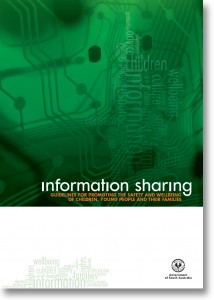 Access Economics’ November 2008 report, The Cost Of Child Abuse In Australia, estimated the annual cost of child abuse and neglect in 2007 at $4 billion. The report conservatively places the value of related costs at a further $6.7 billion.1
Access Economics’ November 2008 report, The Cost Of Child Abuse In Australia, estimated the annual cost of child abuse and neglect in 2007 at $4 billion. The report conservatively places the value of related costs at a further $6.7 billion.1
The social and psychological costs of child abuse and neglect to individuals and communities are huge and those who pay most are the children and young people who have been abused or neglected. According to a major review conducted by the National Child Protection Clearinghouse in 20052, child abuse is associated with low self-esteem, increased fear, mental illness, drug and alcohol abuse, self-harm, homelessness, suicide and many other physical and mental ailments. Even for resilient individuals, these events can have a significant negative impact on success in employment, educational attainment, relationships, parenting and capacity to participate in and contribute to society.
Over the past decade the focus of child protection policy has moved away from punitive measures to an emphasis on early intervention, improved interagency collaboration and education strategies.
The key to success is to intervene early, when children are beginning to experience difficulty, share the warning signs, collaborate and take action before the problems become entrenched.
Keeping Them Safe p.12 3
Child protection reviews and reports, like the 2009 National Framework for Protecting Australia’s Children and the 2003 Layton Review Report, advocate early intervention, interagency collaboration and improved information sharing among agencies.
In October 2008 the South Australian State Cabinet endorsed the Information Sharing Guidelines for Promoting the Safety and Wellbeing of Children, Young People and their Families (ISG), a state wide framework setting out how information can be shared to enable early and more effective coordination of services and to prevent further harm.
The first stage of implementing the ISG began in mid 2009. Participating agencies report that:
• The ISG supports and expands on existing good practice within organisations.
• There is benefit in having one overarching framework that provides a consistent approach and explains simply and directly how and when to share information and for what purpose.
• Acting to protect vulnerable children and young people frequently involves sharing information about the adults whose behaviour poses a risk to the safety and wellbeing of the children and young people they relate to.
• Supporting vulnerable adults supports vulnerable children.
We work from an early intervention and systemic framework anyway, so we always consider the safety and wellbeing of the whole family in what we do. The ISG reinforce that. This process makes staff feel more confident they are doing the right thing.
Group Manager, UnitingCare Wesley Adelaide
Every family that is successfully supported will save the costs to government of investigations, prosecutions, responding to homelessness and provision of state care, mental health facilities, drug and alcohol services and other services.
We have some very strong interagency groups set up across the region and we are continuing to set these up in areas of need. The ISG, and particularly the flow chart, have been used as an induction tool for these groups. Information sharing for us has been significantly supported by the existence and promotion of the ISG. … if anything it’s legitimised the practice we have always had and has strengthened interagency collaboration by removing some of the aspects of uncertainty that seemed to exist across agencies in the past.
Regional Manager Support Services, DECS
The final word is from a Child and Family Health Service worker about a positive intervention involving a young mother and her six day-old child escaping family violence:
… the ISG gave all of the workers involved in this case the extra tools and permission they needed to ‘join the dots’ and provide the multi-agency support this family really needed.
Footnotes
1 Taylor, P., Moore, P., Pezzullo, L., Tucci, J., Goddard, C. and De Bortoli, L. (2008). The Cost of Child Abuse in Australia, Australian Childhood Foundation and Child Abuse Prevention Research Australia: Melbourne.
2 N. Richardson, Social costs: The Effects Of Child Maltreatment, National Child Protection Clearinghouse, AIFS, Resource Sheet no. 9, 2005.
3 Government of South Australia (2004) Keeping Them Safe
